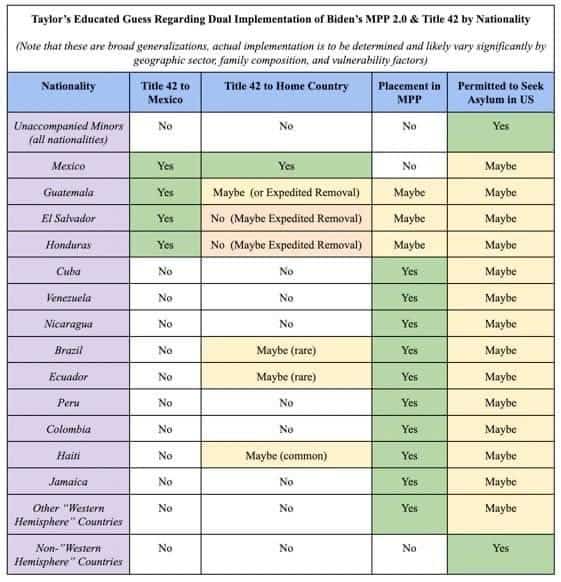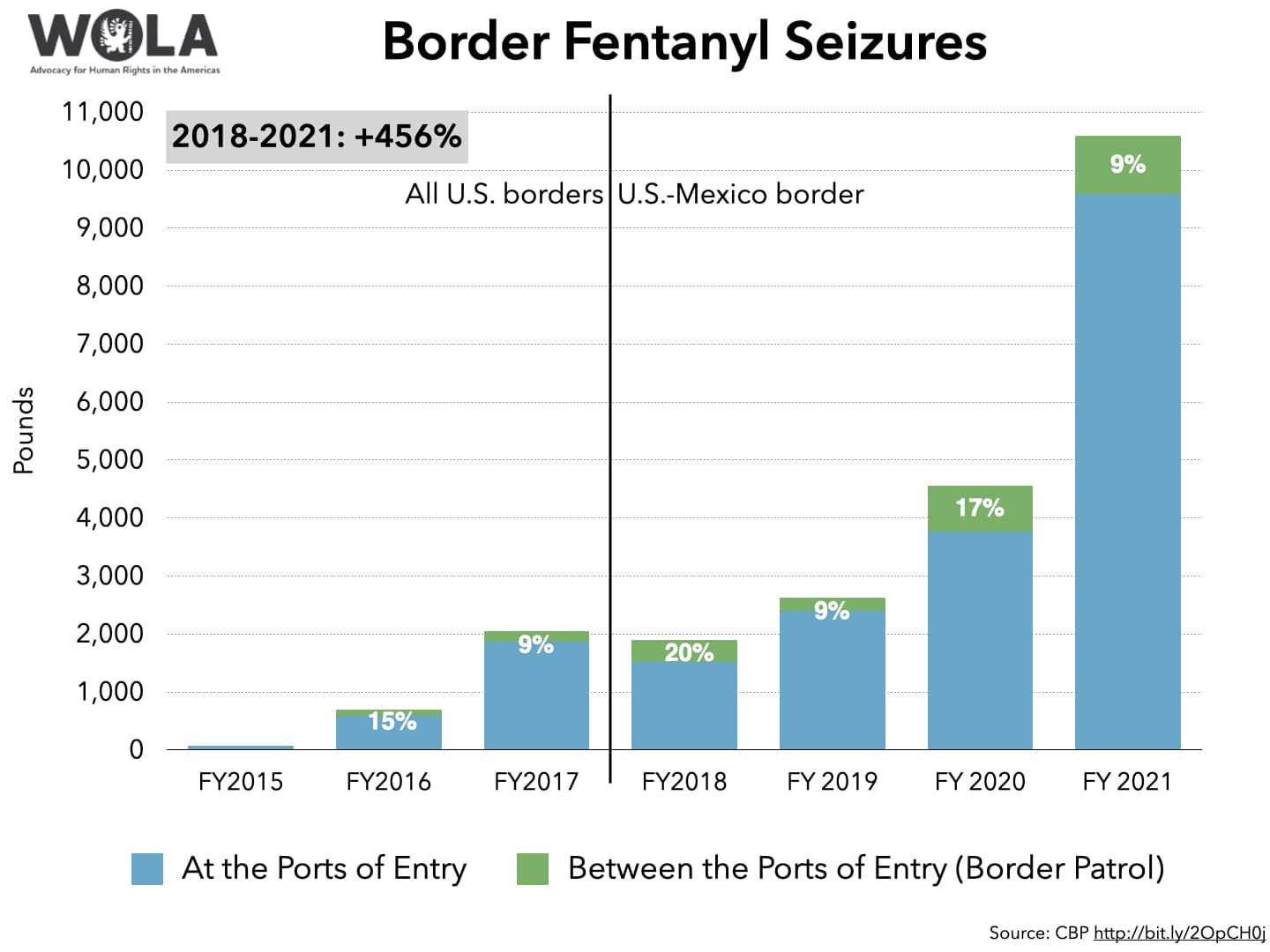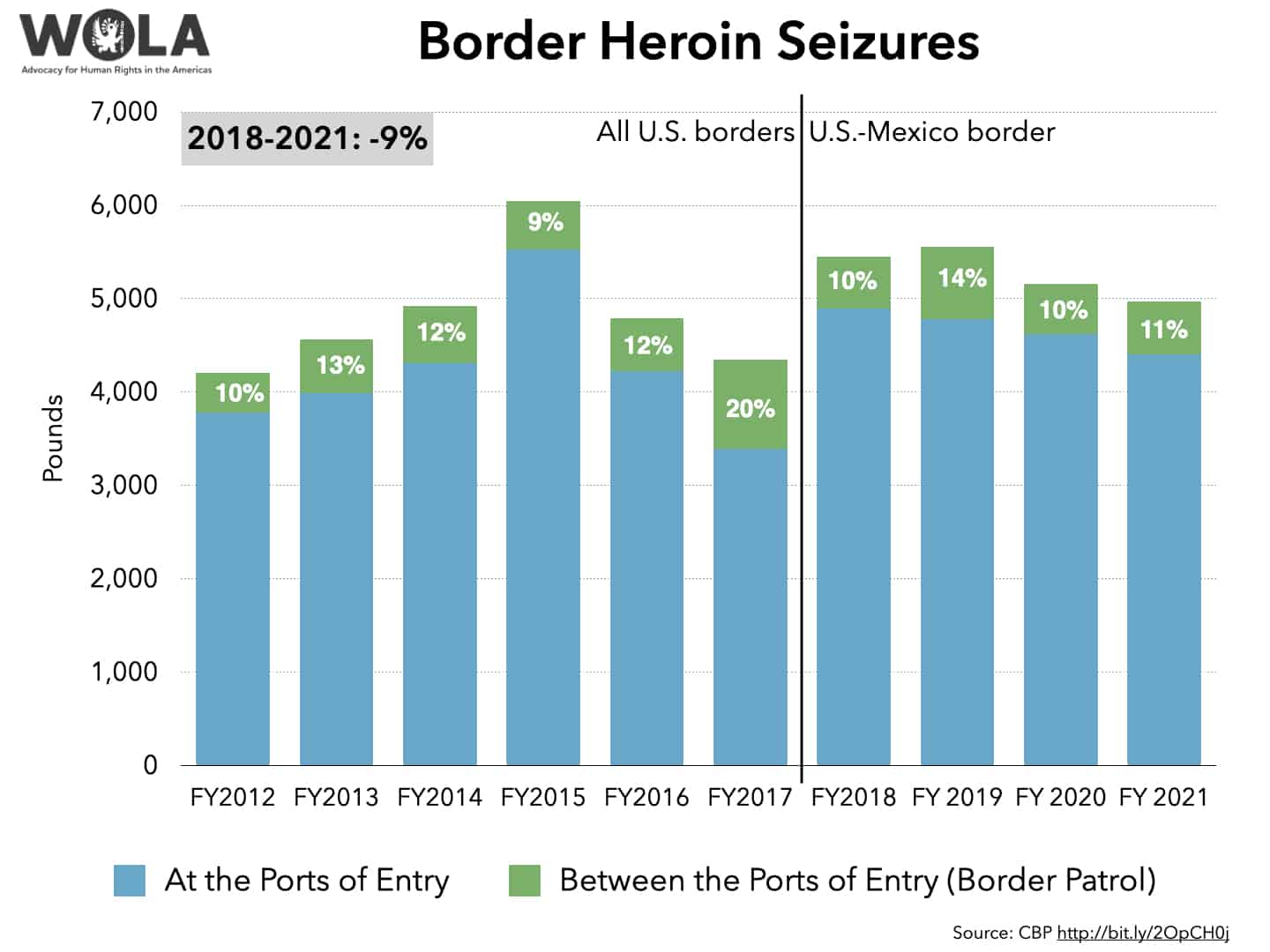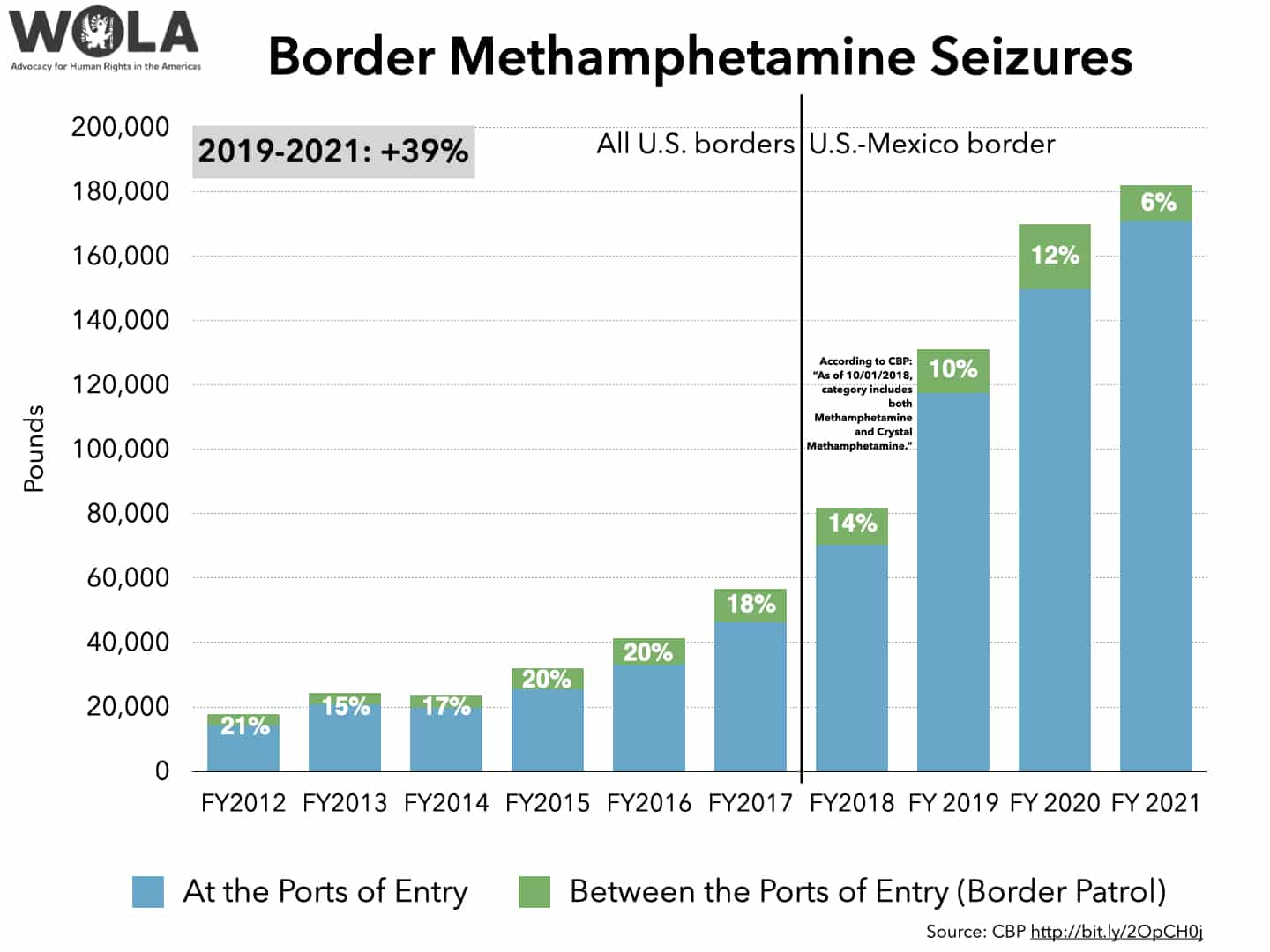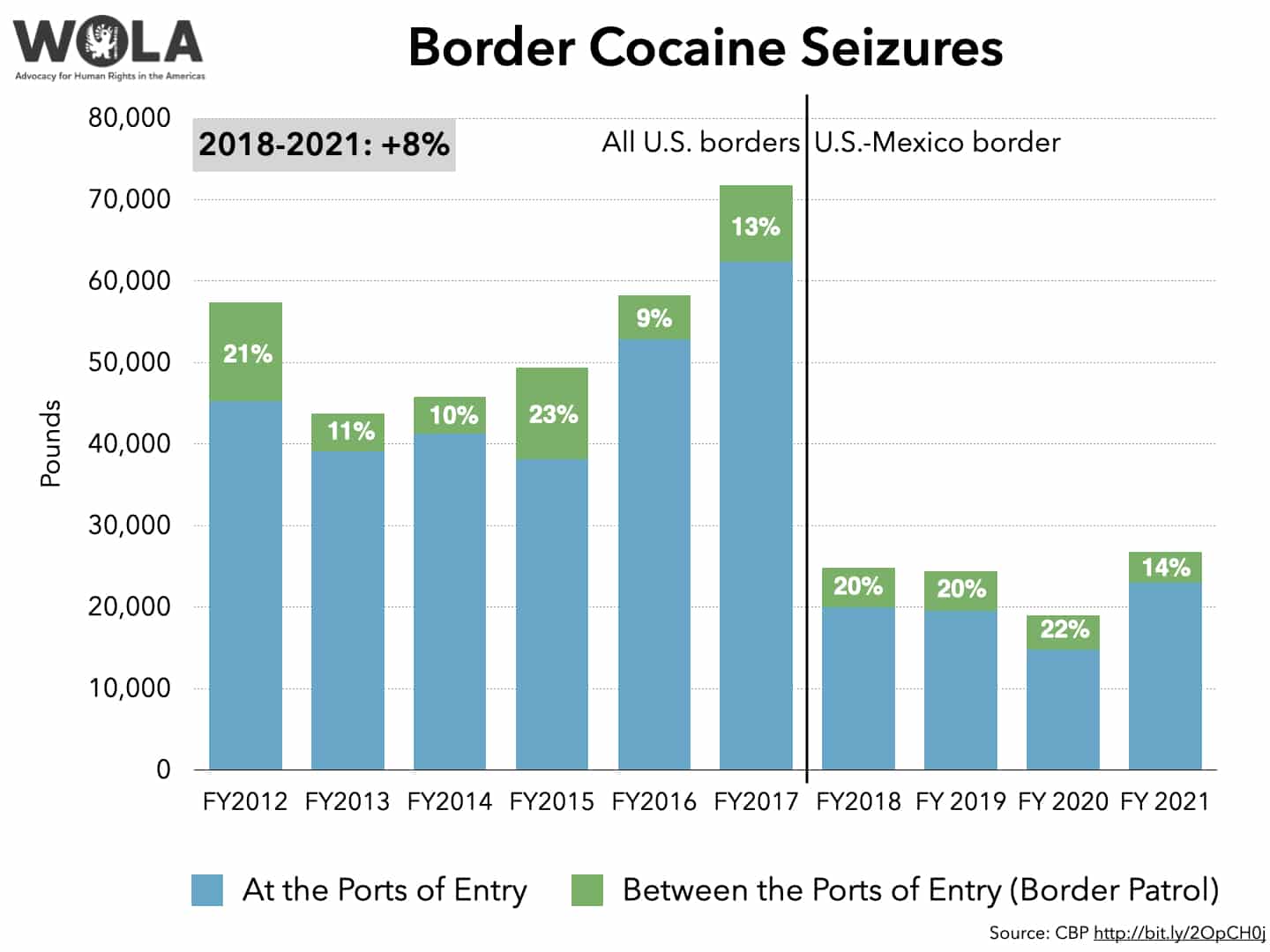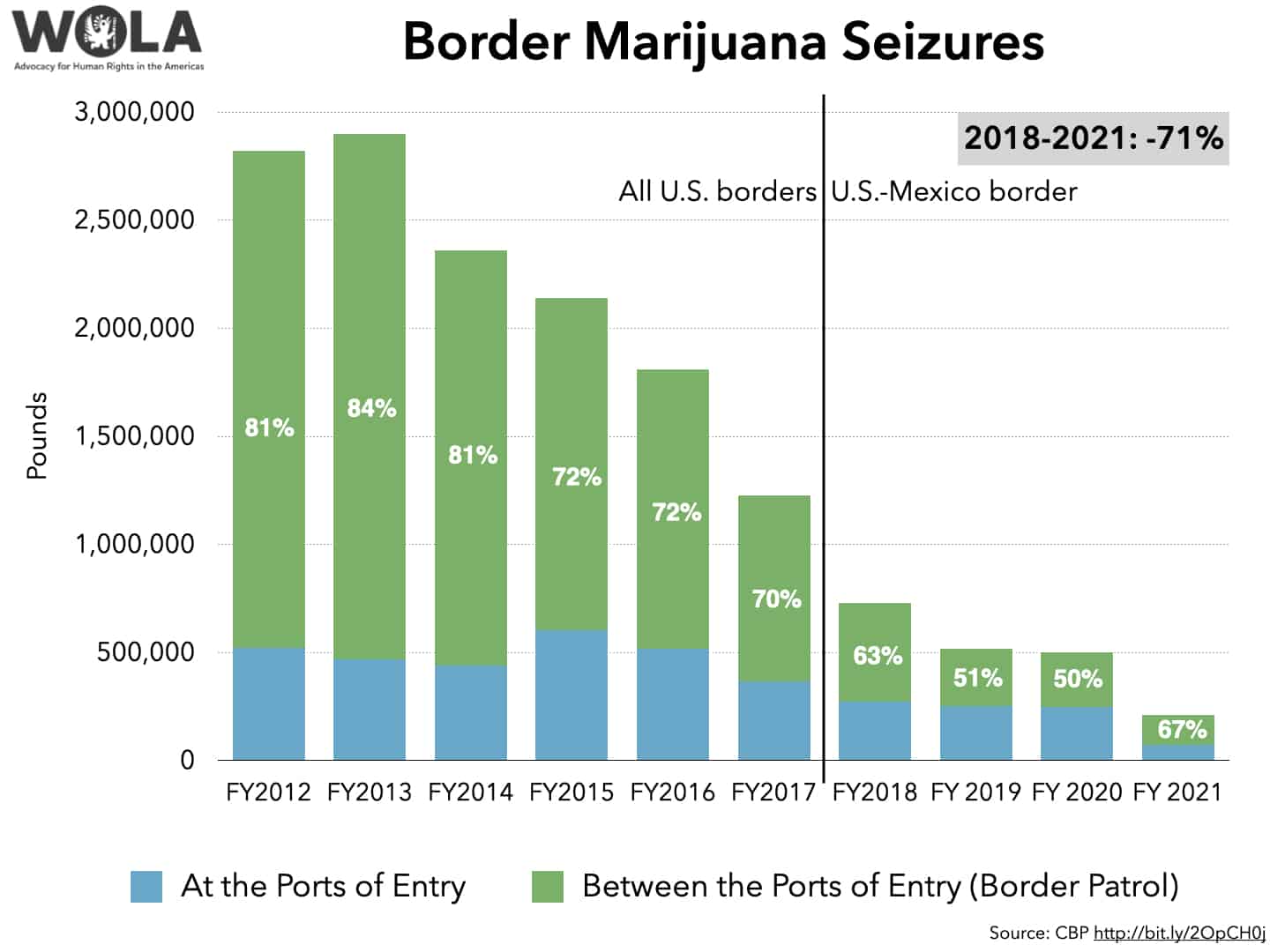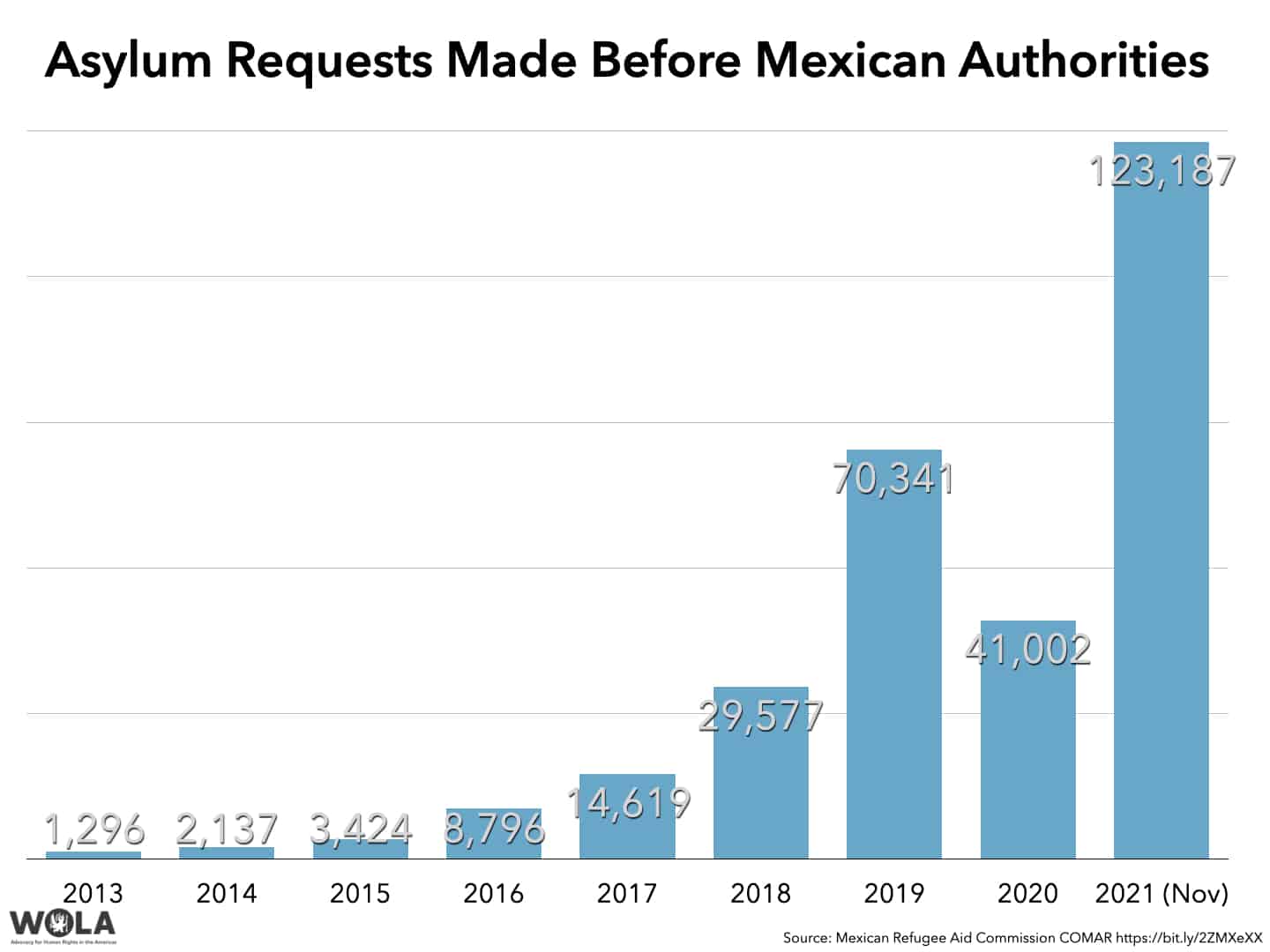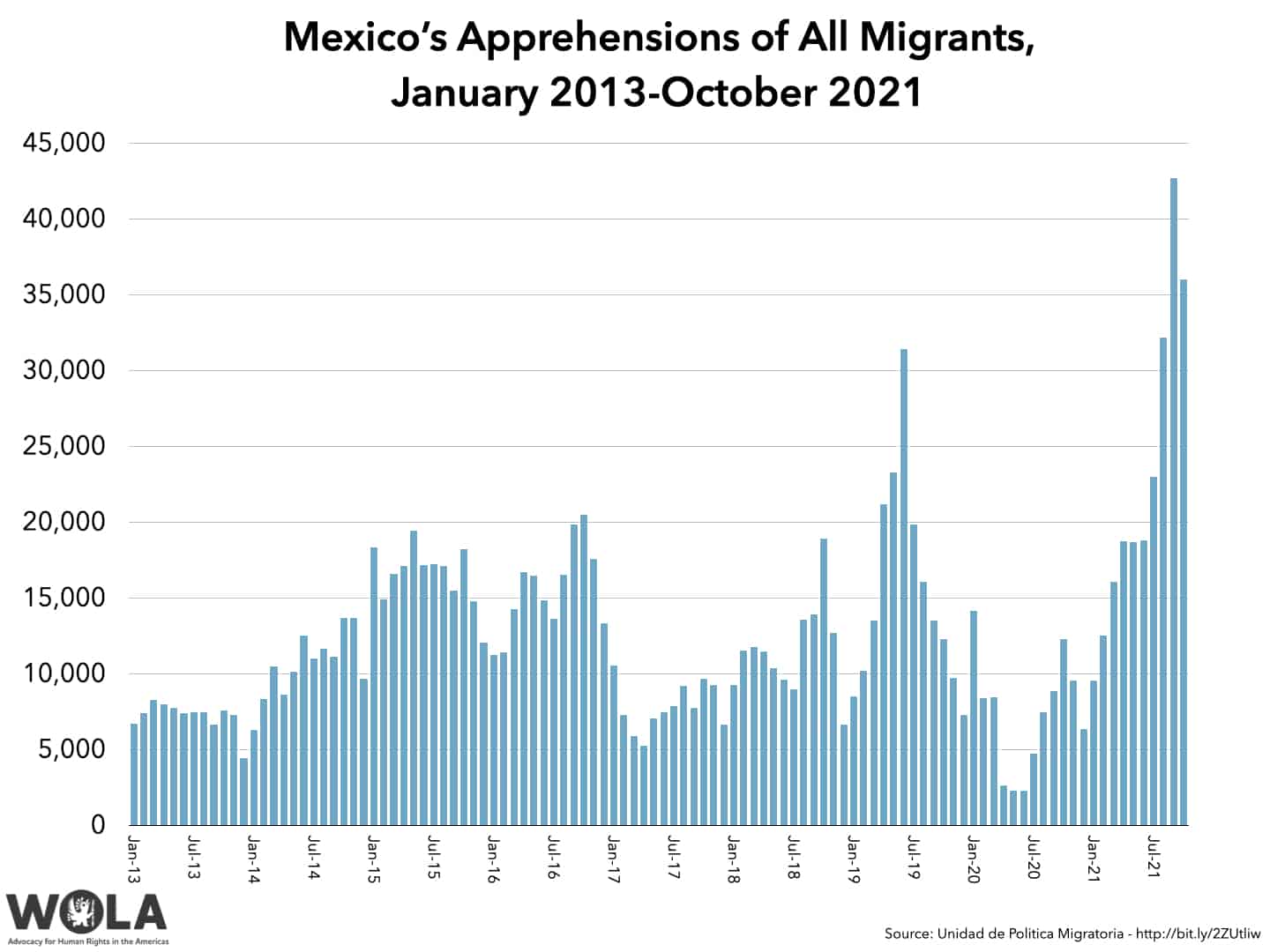With this series of weekly updates, WOLA seeks to cover the most important developments at the U.S.-Mexico border. See past weekly updates here.
Remain in Mexico to restart Monday, December 6
On December 2 the Departments of Homeland Security (DHS), Justice (DOJ), and State announced, and Mexico’s government acknowledged, agreement on a court-ordered restart of the Trump administration’s “Remain in Mexico” program. Starting on December 6 at one port of entry—probably El Paso—non-Mexican asylum seekers will once again be made to await their U.S. immigration hearings inside Mexico, rather than inside the United States where many have family ties, support networks, and places to live. The program will “start in one location and will expeditiously expand… border-wide in the days that follow,” reads a DHS court filing.
Known officially as “Migrant Protection Protocols” or “MPP,” Remain in Mexico sent 71,071 asylum-seekers back across the border between January 2019, when the Trump administration began implementing the policy, and Inauguration Day 2021, when the Biden administration suspended it. Human Rights First was able to document 1,544 violent attacks on these asylum seekers—kidnappings, assaults, rapes—after their return to Mexican border towns with some of the hemisphere’s highest violent crime rates. Of 45,387 RMX asylum cases that reached a decision, only 740 (1.6 percent) resulted in grants of asylum or other relief, and only 10 percent (18 percent of those who were able to attend all immigration hearings) had legal representation.
Candidate Joe Biden opposed Remain in Mexico; in December 2019 Jill Biden decried the program on a visit to an encampment of asylum seekers in Matamoros, Mexico. The new Biden administration suspended it and brought more than 10,000 asylum seekers with pending cases back to the United States. A June 1, 2021 DHS memo officially terminated Remain in Mexico.
The Republican attorneys-general of Texas and Missouri sued to reinstate the policy. A federal district court judge in Amarillo, Texas (a Trump appointee) agreed on August 13 that the Biden administration had failed to weigh the consequences of terminating RMX, and ordered it to carry out a “good faith” effort to restart the program. The Supreme Court refused to place a stay on this order while the Biden administration appealed it.
DHS issued a new memo (on October 29) “re-terminating” Remain in Mexico, with strong arguments about the program’s cruelty and ineffectiveness. However, amid a sharp increase in migration at the border during the pandemic’s latter phases, the Biden administration has been internally ambivalent about re-starting the program. “Biden appointees at DHS and the National Security Council had already proposed reviving the policy months earlier, in the spring,” CBS News reported in November. And the administration has followed the Texas court’s order rigorously, setting up infrastructure for hearings near border crossings and negotiating with Mexico its reception of those who would be forced to “remain.”
As laid out in a November 26 statement, Mexico’s government had several demands for a restarted program. Asylum seekers, it said, should have improved access to legal assistance. They should have medical attention and COVID-19 vaccines. Those with vulnerabilities—pregnant women, people with physical or mental disabilities, the elderly, LGBTI people, those who speak only Indigenous languages—should not be made to “remain.” Returns should be closely coordinated with authorities on the Mexican side. The U.S. government should provide resources for shelter and “meaningful” efforts to improve migrants’ conditions.
U.S. negotiators committed, with varying degrees of specificity, to meeting all of these conditions, and Mexico gave its green light on December 2. According to the deal to restart Remain in Mexico, first reported by the Washington Post, asylum seekers will be sent back into Mexico at ports of entry in San Diego and Calexico, California; Nogales, Arizona; and El Paso, Eagle Pass, Laredo, and Brownsville, Texas. Immigration courts, with a total of at least 22 dedicated judges, will operate near the San Diego, El Paso, Laredo, and Brownsville ports of entry. The Laredo and Brownsville facilities will once again be tents where asylum seekers must argue their cases via videoconference.
Due to difficult security conditions across from Eagle Pass (Piedras Negras), Laredo (Nuevo Laredo), and Brownsville (Matamoros), “some individuals” sent across the border there “may be moved to the interior of Mexico to await their hearings,” reads the guidance DHS published on December 2. It is not clear how they will be transported back to attend those hearings.
An official told the Washington Post that the plan “initially” is to apply Remain in Mexico “primarily for single adult asylum seekers,” instead of families. This has not been reported or acknowledged elsewhere.
Though administration officials claim they are only reinstating Remain in Mexico, a program they oppose, to comply with a court order, their efforts to do so have been far from minimal. In fact, the program’s 2.0 version will apply to citizens of even more countries than before: “nationals of any country in the Western Hemisphere other than Mexico,” the guidance reads. The Trump-era program was applied only to Spanish and Portuguese speakers, but notices for migrants who claim fear of harm in Mexico are being translated into Haitian Creole as well, according to an internal document seen by CBS News reporter Camilo Montoya-Galvez.
Between September 19 and November 26, the U.S. government used the Trump-era “Title 42” pandemic authority, which remains in effect, to expel 8,898 people back to Haiti, 20 percent of them children, on 85 different flights, usually without any chance to ask for asylum. The Biden administration will most likely continue to apply Title 42 to most migrants from Mexico, El Salvador, Guatemala, and Honduras, as Mexico agreed in March 2020 to take back expelled citizens of those countries. Asylum seekers from other hemispheric countries, who are harder to expel because of distance or poor consular relations, will now be more likely to end up forced to Remain in Mexico—apparently including Haitians. Those migrants will have U.S. hearing dates, while those expelled under Title 42 do not.
Immigration attorney Taylor Levy, who has represented numerous RMX clients, shared this chart of likely destinations for asylum seekers, by nationality, as the Biden administration operates Remain in Mexico and Title 42 simultaneously:
U.S. government documents and media reports point to the following changes that the Biden administration has agreed to implement to “soften” Remain in Mexico.
- All asylum seekers will receive a COVID vaccine (one-dose Johnson and Johnson if over 18, one dose of a two-dose regime if between 5 and 18). “Proof of COVID-19 vaccination will be required for re-entry into the United States.” Mexico’s December 2 statement refers to “making vaccines available to migrants subject to both [Remain in Mexico] and Title 42 of the United States Code,” but no U.S. statements have referred to vaccinating those expelled under Title 42.
- Mexico demanded that cases be resolved within a six month maximum timeframe; DHS guidance commits only to coordinating with the Justice Department’s Executive Office of Immigration Review (EOIR, the immigration court system) “to align the number of new MPP enrollments with the number of cases EOIR states it generally can complete within 180 days.”
- DHS will facilitate access to counsel by providing “legal resource packets;’ State Department information about “where they can locate places in Mexico to engage in telephonic or video communications with counsel;” toll-free, confidential telephone access to confer with attorneys while in DHS custody; and the ability to confer with counsel before their hearings. These measures may make little difference to most of those made to remain in Mexico:
- Only 10 percent of those in the Trump-era program had legal representation, compared to 60 percent inside the United States.
- Confidential discussions with counsel are very difficult while in DHS custody. “How is DHS going to do this? They struggle to do this with people in ICE custody who aren’t in MPP. It’s hard to imagine CBP [U.S. Customs and Border Protection] pulling off confidentiality,” tweeted Ohio State Law professor César García.
- Meanwhile, “getting a US lawyer while stuck in Mexico in MPP is nearly impossible,” as Aaron Reichlin-Melnick of the American Immigration Council put it. In an October 19 letter, 73 legal service providers, law school clinics, and law firms, representing the overwhelming majority of border-area pro bono legal counsel, refused to take RMX cases this time, citing past security threats and trauma while trying to do their jobs in Mexican border towns. They are declining government requests to be added to the contact lists that asylum seekers will be given before DHS returns them to Mexico. “We certainly hope and expect that there will be counsel who will be available to help this population,” an official told reporters on a December 2 call.
- Procedures for expressing fear of returning to Mexico will be strengthened somewhat. CBP officials must now “proactively ask questions” about migrants’ fear of return to Mexico. Those who do will have 24 hours to consult with counsel while in custody, if they can obtain representation, before an interview with an asylum officer. Asylum seekers will not be returned to Mexico if they can convince the asylum officer “that there is a ‘reasonable possibility’ that they will be persecuted on account of a statutorily protected ground (race, religion, nationality, membership in a particular social group or political opinion) or that they will be tortured in Mexico.” The standard of “reasonable possibility” is less stringent than the past RMX standard of “more likely than not.”
- Vunerable people exempted from Remain in Mexico will include “those with a known mental or physical health issue, including a disability or a medical condition related to pregnancy”—but not pregnancy itself; “those with particular vulnerabilities given their advanced age” but not all elderly people; and those at risk “due their sexual orientation or gender identity.” Reichlin-Melnick observes, “These categories are very similar to what they were under Trump, and CBP routinely violated even the narrow protections in place. I fully expect CBP to ignore these exemptions this time around too.”
- While security in Mexican border towns remains uncertain, the DHS guidance states that the agency is “working with” the State Department and government of Mexico to ensure “access to shelters in Mexico and secure transportation to and from ports of entry to these shelters, so as to enable safe transit to and from court hearings.” No specifics are yet available about shelters and safe transportation. (The Trump-era program made no allowances for shelter, and required asylum seekers to find their own way to ports of entry on their hearing dates, usually for 4:00AM appointments.)
When asylum seekers have no address in Mexico—which is almost always, since they have sought to travel through Mexico to reach the United States—the DHS guidance tells CBP officials to instruct asylum seekers to update their forms “once an address is secured.”
As in the past, finding shelter in Mexican border towns is entirely up to migrants, and relies heavily on those towns’ charity-run shelter systems. “If people put into MPP are to ‘have access to shelters,’ those shelters should already be ready. Where are they?” García tweeted. In fact, right now “many shelters are full, and some shelters continue to operate at a reduced capacity” due to COVID-19 in Mexican border towns, according to the latest (December 1) “ Metering Update” from the University of Texas Strauss Center. The 23 public and private shelters in Ciudad Juárez are already at 70 percent capacity, the Mexican daily Milenioreported this week.
During the Trump-era Remain in Mexico program, Mexico “resisted” UN or outside assistance to shelter asylum seekers, as the Washington Post put it. This time, the Mexican government’s November 26 statement “considers it essential to have additional resources from the United States, destined for shelters and international organizations to improve conditions for migrants and asylum seekers in a meaningful way.” The IOM-Mexicooffice already reiterated its public criticism of the program, which it considers in violation of international law, and called on the Biden administration to end it as soon as possible.
While all this happens, the Biden administration continues to challenge the Texas judge’s order in the courts; its appeal remains before the New Orleans-based Fifth Circuit. The American Civil Liberties Union has indicated that it may revive its Trump-era lawsuit against Remain in Mexico. If it does, the Biden administration may find itself in the bizarre position of fighting the ACLU to preserve “Remain in Mexico” in one court, while simultaneously fighting the attorneys-general of Texas and Missouri to end “Remain in Mexico” in another court.
2021 border drug seizures overview
A massive mid-November drug seizure at a San Diego port of entry—17,584 pounds of methamphetamine and 389 pounds of fentanyl on a single truck—drew attention to increased trafficking of synthetic drugs at the U.S.-Mexico border, even as seizures of drugs derived from plants (cocaine, heroin, marijuana) are flat or declining. Further attention came from a much-mocked tweet by Rep. Elise Stefanik (R-New York), chairwoman of the House of Representatives’ Republican Conference, reporting a big fentanyl seizure at a port of entry as a sign of “Biden’s Border Crisis.”
In late October CBP released statistics about border drug seizures during the 2021 fiscal year, which ended on September 30. Three trends in particular stand out.
1) For the first time, seizures of fentanyl exceeded seizures of heroin. This is remarkable because by weight and volume, fentanyl is about 50 times more potent than heroin. The drug, synthesized in labs, appears to be replacing heroin among U.S. users of illegal opioids; some journalistic reports have documented depressed prices and conditions for farmers who grow opium poppies in rural Mexico. By weight, fentanyl seizures in 2021 were more than double heroin seizures. Since 2018, CBP’s seizures of heroin have declined 9 percent while seizures of fentanyl have increased 456 percent. Fentanyl was involved in a majority of the shocking 100,306 estimated overdose deaths in the United States in the 12 months ending April 2021.
2) Another synthetic drug, methamphetamine, continues to increase, while seizures of cocaine—derived from the coca plant—are barely rising. Seizures of methamphetamine are up 39 percent since 2019. Cocaine is up only 8 percent since 2018, even as U.S. and UN estimates point to a multiplication of the drug’s production in the Andean region over the past 8 years. These charts point to a similar divergence between synthetic and plant-based drugs.
Seizures of another plant-based drug, marijuana, have plummeted even more steeply, by 71 percent since 2018. This owes largely to the drug’s legalization in many U.S. states, which has deeply reduced incentives to risk smuggling it across the border.
3) With the exception of the rapidly declining marijuana traffic, the overwhelming majority of border drug seizures happen at ports of entry, and not in the areas between where Border Patrol operates and walls get built. Drugs are most often smuggled in vehicles and amid cargo. Even a significant portion of Border Patrol’s seizures happen at vehicle checkpoints, and not out in the field. Reduced traffic at ports of entry during the pandemic—non-citizens were barred from entry for “non-essential” purposes between March 2020 and November 2021—may have helped CBP seize more drugs, Vice observes.
Caravan updates
“Caravans” of migrants from Central America, Haiti, and elsewhere continue to leave Mexico’s southern border-zone city of Tapachula, in Chiapas, the country’s poorest state. They are not succeeding in reaching either Mexico City or the U.S. border. Security-force and immigration personnel are preventing participants from traveling in vehicles, forcing them to walk. Many are meanwhile accepting offers of documents allowing them to await decisions on their asylum cases in other parts of the country.
Increasingly, the “caravans” are resembling less efforts to migrate than protests against Mexican government policies confining asylum applicants to the state where they applied. Mexico’s refugee agency, COMAR, is badly backlogged. It reported receiving 15,018 asylum requests in November, bringing its year-to-date total up to 123,187 asylum requests. This is by far COMAR’s record, 95 times more asylum requests than the agency received in 2013—and 2021 isn’t over yet. Two thirds of this year’s asylum seekers are from Haiti (47,494) or Honduras (35,161).
While people await decisions from the overwhelmed agency, they must remain in the same state where they applied. 68 percent of asylum seekers—84,606 people—submitted their applications this year in Tapachula, a city of 300,000 that offers very few employment and income opportunities for those whose Mexican migration documents restrict them to Chiapas. Groups of mostly Haitian migrants sought to exit Tapachula en masse in late August and early September, but were blocked or dispersed by Mexican forces. (In mid-September, though, a group of 15,000 mostly Haitian migrants made it all the way to Del Rio, Texas; how Mexico’s enforcement shifted to allow this to happen remains unclear.)
On October 23, a caravan of perhaps 3,000 mostly Central American migrants departed Tapachula, and has proceeded on foot for hundreds of miles, reaching the Isthmus of Tehuántepec, Mexico’s narrowest point, in the Gulf Coast state of Veracruz. By November 27, the Mexican daily La Jornada reported, this caravan’s numbers had dwindled to about 150; most had taken offers from Mexico’s migration agency, INM, of documents allowing them to reside in another central or southern Mexican state while awaiting outcomes from COMAR. In recent days, the remaining members of this caravan appeared to be attempting to board cargo trains, known as La Bestia, to take them from Veracruz to Mexico City.
Other groups that departed Tapachula in mid-November appear to be following a pattern of walking many miles up Chiapas’s coastal highway, then desisting. Usually, the marches end with official offers of documents allowing caravan participants to move to other Mexican states, along with bus transportation to those states, all of which are far from the U.S. border. Some of these recent “caravans” are now more properly described as highway blockades: protests to demand relocation outside of Chiapas.
Thousands of Haitian migrants remain in Tapachula. Many are assembled outside the city’s soccer stadium, which COMAR has been using as a processing facility. Most are demanding permission to await decisions in states other than Chiapas. Meanwhile, more Haitian people continue to arrive in southern Mexico. Panamanian authorities counted more than 75,000 Haitian citizens—most of whom had lived for years in Brazil and Chile—crossing through the treacherous Darién Gap region between January and October, the Houston Chronicle reports. 17,000 came through in October alone.
Mexico’s National Migration Institute (INM) meanwhile continues to report large numbers of migrant apprehensions. August (3rd), September (1st), and October (2nd) are INM’s top three months for migrant apprehensions in the 20 years since Mexico’s government started sharing records. Of 228,115 migrants Mexico has apprehended between January and October 2021, 97,968 are from Honduras, 64,733 from Guatemala, 18,988 from El Salvador, 17,516 from Haiti, 10,960 from Nicaragua, 5,133 from Cuba, 2,288 from Venezuela, 2,166 from Chile (nearly all of them children of Haitians born in Chile), and 1,766 from Brazil (many of them also probably Haitians born in Brazil).
Notably, Mexico has deported just over one migrant for every three it has apprehended this year—82,627 deportations between January and October. Those most frequently deported come from Honduras (42,375), Guatemala (32,427), El Salvador (3,682), and Nicaragua (1,222). Haitians are fifth with 816 deportations.
Links
- A “Bicentennial Framework” has replaced the “Mérida Initiative” as the guiding set of principles for U.S. security cooperation with Mexico. It focuses on a public health approach to drugs, combating arms trafficking, and targeting illicit financial flows. A new analysis from WOLA’s Mexico Program unpacks the likely differences and continuities in U.S. policy and the bilateral relationship.
- The latest quarterly “ Metering Update” from the University of Texas Strauss Center finds 26,505 asylum seekers on waiting lists in 8 Mexican border cities in November—a 29 percent increase from the researchers’ Augustreport.
- A new report from the El Paso-based Hope Border Institute digs into the reasons why increasing numbers of migrants are arriving. 51 in-person interviews with migrants at Ciudad Juárez shelters revealed that COVID and climate change are layered onto the traditional reasons why people are fleeing. Using data gained from thousands of surveys in El Salvador, Guatemala, and Honduras, the Migration Policy Institute, World Food Program and MIT Civic Data Design Lab found an increased desire to migrate, a modest increase in actual plans to migrate, and economic factors predominating over several causes behind people’s decisions to migrate.
- A study by physicians associated with Physicians for Human Rights finds evidence of long-lasting mental disorders among migrants whose families were forcibly separated at the border during the Trump administration. The Dallas Morning News has an overview.
- CBP took 2,021 formal disciplinary actions against members of its 60,000-person workforce in fiscal year 2020, up from 1,629 actions in 2019, according to a new report.
- On November 17, just before a mandate that all federal employees be vaccinated against COVID-19 by November 22, Border Patrol had a 79 percent rate of full vaccination. Another 16 percent had pending requests for exemptions from the mandate, much higher than the federal government average, leaving 5 percent unvaccinated or unresponsive. At the Intercept, Ken Klippenstein writes about agents who resent or are resisting the vaccine mandate.
- Numbers of unaccompanied children arriving at the border have been gradually increasing since mid-October, though daily totals are still well below March-April and July-August increases. Aaron Reichlin-Melnick of the American Immigration Council charts it out.
- The U.S. and Mexican governments announced agreement to support “Sembrando Oportunidades,” a joint program of development aid to Central America. This may have been an effort to sweeten the deal involving Mexico’s cooperation with “Remain in Mexico.”
- CBP has issued a policy statement laying out standards for more humane treatment of, and medical care for, infants and pregnant, postpartum, and nursing women in the agency’s custody.
- At the Arizona Daily Star, Curt Prendergast and Alex Devoid document repeated unsuccessful attempts to pass legislation to deal more effectively with migrant deaths on U.S. soil near the border. “In all but one instance, bills that addressed migrant deaths either stalled in committees or were voted down as part of comprehensive immigration reform bills.”
- More than 200 migrants, including one group of 70 from Venezuela, have been apprehended in Texas’s Big Bend National Park, one of the remotest and usually least active stretches of the entire border, between November 25 and December 1.
- Reuters reports from Alpercata, a small town in Minas Gerais, Brazil that has lost a large portion of its population to U.S.-bound migration—including 10 percent of students and 5 percent of employees at the mayor’s office—since the pandemic hit. As is the case with several South American countries, Mexico had not been requiring visas of visiting citizens of Brazil. Due largely to U.S. pressure stemming from large numbers of Brazilian citizens arriving in Mexico and being apprehended on the U.S. side of the border, Mexico on November 26 announced a temporary suspension of visa exemptions for Brazil.
- Just since October 1, people have breached the border fence in CBP’s El Paso sector more than 198 times using bolt cutters, grinders, and acetylene torches, the agency reports. Still, in south Texas’s Starr County, the state government is preparing to use its own funds to build border fencing along about 20,000 acres of property fronting the Rio Grande.
- As the world reacted to the COVID-19 omicron variant, first documented in South Africa, Texas Gov. Greg Abbott (R) earned rebukes after tweeting that South Africans were being apprehended at the Texas-Mexico border. Border Patrol apprehended four South African citizens at the border in all of 2019, and four more in 2020.
- Rodney Scott, the Trump administration’s last Border Patrol chief who exited his position in August, faced a San Diego Superior Court judge for a September tweet in which he advised former Border Patrol agent turned activist Jenn Budd, who has recounted being raped at the Border Patrol academy, to “lean back, close your eyes, and just enjoy the show.” Budd also posted screenshots on Twitter showing Scott among those on private CBP and Border Patrol agents’ Facebook groups sharing images of Border Patrol shoulder patches reading “Let’s Go Brandon,” a right-wing euphemism for “F— Joe Biden.”

 Adam Isacson
Adam Isacson
